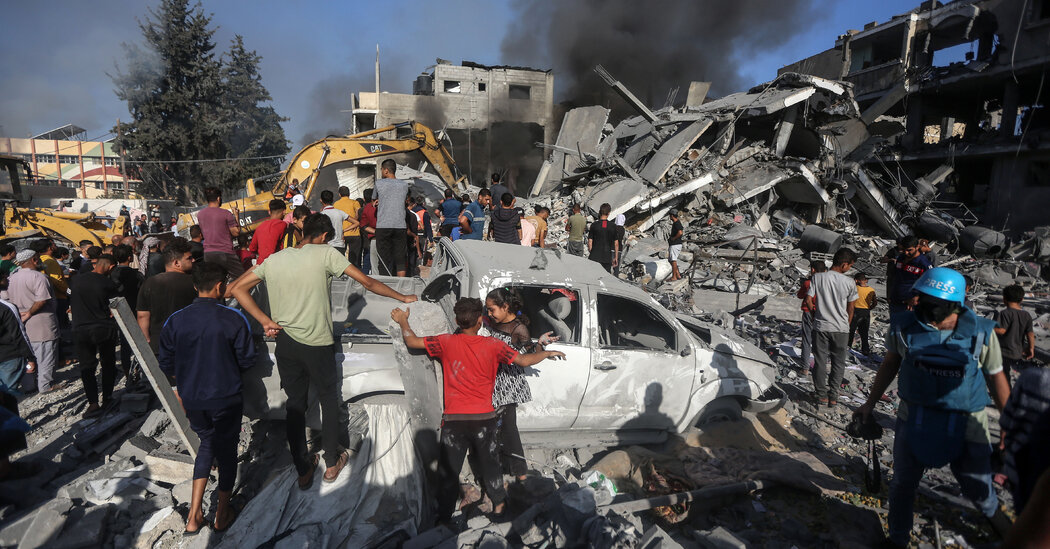
the road back from hell
On the Fate of the West Bank: Israel’s Commitment to Security Cooperation in the First Three Months of the Gaza War
After Israel’s horrific loss of over 1,400 civilians and soldiers on Oct. 7, the civilian death toll of Palestinians in Gaza is now nothing short of staggering. More than 10,300 Palestinians have been killed since the beginning of the war, according to the Gaza Health Ministry. Over 2200 Palestinians were arrested in the West Bank and East Jerusalem and threats of ethnic cleansing were made by Israeli political and settlers leaders.
In the north, an exchange of fire between Israel and Hezbollah could turn into a full-blown conflict in a day or two. The ramped-up U.S. military deployment in the region may be framed as preventive, but it also signals to Israel’s leaders that it can drag America into this war — a risky addition to calculations, miscalculations and unpredictability all around. The regional conflagration is already here. The question is how bad it will get.
A vast majority of global leaders and all Arab leaders have demanded an immediate cease-fire, recognizing the danger of a metastasizing crisis, as have the heads of 18 U.N. agencies. The nations opposed to a cease-fire might acknowledge the dangers that are about to come. But they insist that after Oct. 7, Israel must be allowed to militarily eliminate Hamas and should be supported in that quest, despite the unconscionable and growing cost in civilian life.
From the early days of the crisis, Qatar has been mediating behind-the-scenes negotiations with Israel, Hamas and the United States for a deal to secure the release of Israelis and others being held in Gaza. The release of all civilians, including women, children, elderly adults and the sick, in exchange for a five-day cessation of hostilities was close to being finalized according to current and former officials in three regional capitals. Israel nixed that deal by launching its ground incursion.
The Palestinian Authority’s alternative to security cooperation is discredited by the growing Israeli occupation of the West Bank, which has led to an increase in illegal Israeli settlers.
That may sound like a pipe dream. How can Israel be expected to engage, even indirectly, with a political body in which Hamas is represented? The truth is that this is exactly what coming to terms with conflict looks like. There is a path to Israeli security, and it entails security and rights for Palestinians. A reformed P.L.O. will be a must for any future government that is serious about a way forward.
The road back from the hell of a zero-sum “us or them” begins with the humanizing of the other. It could be a road that leads us back to the two-state state. The partition paradigm encourages separation between Palestinians and Israelis, which could be part of the problem. There are no quick or easy solutions. We shouldn’t allow our fears to get in the way of laying the groundwork for a future of life and hope.
Some factions had signed accords with Israel, meant to pave the way for a two-state solution. The Palestinian Authority had limited powers over portions of the West Bank and remained committed to negotiations to end the conflict.
More than Half a million Palestinians fled or were expelled from their homes in 1948, when the first war broke out between Israel and the Palestinians, to make way for the Jewish state.
By the time Mr.Sinwar returned to Gaza, Hamas had established itself as the defacto government and had begun to clash with Israel. There were a lot of deadly exchanges of Hamas rockets and Israeli airstrikes. But most of Gaza’s commercial goods and electricity came from Israel, and Hamas often sought to loosen the blockade during cease-fire talks.
When Mr. Sinwar became the overall head of Hamas in Gaza in 2017, he sometimes projected an interest in accommodation with Israel. He appealed for a cease-fire to ease the suffering in Gaza in an interview with an Italian journalist working for an Israeli newspaper.
He said that he was not saying that he wouldn’t fight anymore. I say that I do not want war anymore. I want the end of the siege. A group of teens are on the shore at sunset, talking to each other and wondering what the world looks like. What life looks like,” he added. I want them to be free.
Israel’s War with the Palestinians: The Role of the Hamas Force in the Security Establishment of the United States and the Middle East
Hamas also issued a political program in 2017 that allowed for the possibility of a two-state solution, while still not recognizing Israel’s right to exist.
“The Israelis were only concerned with one thing: How do I get rid of the Palestinian cause?” Mr. Hamdan said. “They were heading in that direction and not even thinking about the Palestinians. If thePalestinians did not resist, all of that could have happened.
People familiar with the assessments say Israeli military intelligence and the National Security Council thought that Hamas wanted to avoid another war.
Israel’s complex border defenses to shoot down rockets were enough to keep Hamas contained according to many in Israel’s security establishment.
According to American and other Western commentators, Hamas had between 20,000 to 40,000 fighters, most of which were likely manufactured in Gaza with components most likely smuggled in through Egypt. They said the group had portable air-defense systems and anti-tank missiles.
The restoration resulted in a relationship between the axis of resistance and the military wing of Hamas in Gaza. In recent years, a stream of Hamas operatives traveled from Gaza to Iran and Lebanon for training by the Iranians or Hezbollah, adding a layer of sophistication to Hamas’s capabilities, the officials said.

